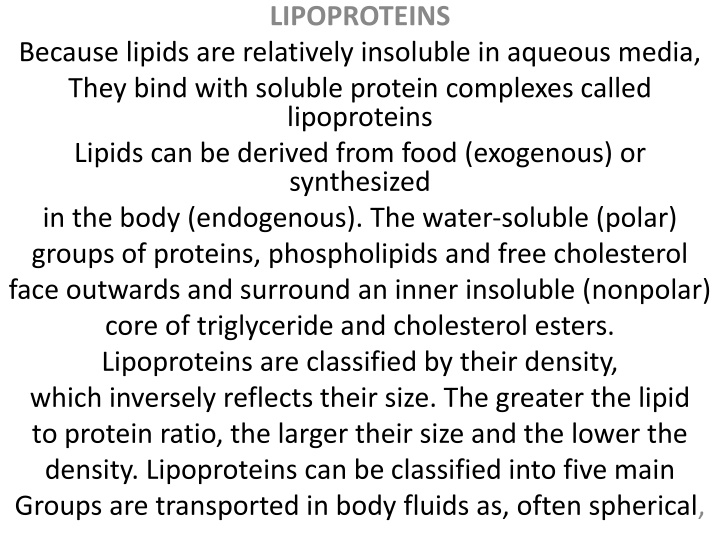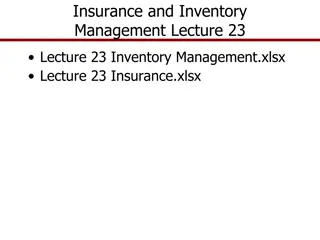Introducing SIDES: Streamlining Unemployment Insurance Requests
Revolutionize how employers handle Unemployment Insurance requests with SIDES, a National Internet-based exchange system. Benefit from timely responses, reduced appeals, and nationally recognized integrity. Discover the advantages for both large corporations and small businesses, including mom-and-pop shops. Learn why SIDES is essential for compliance and how it leads to fewer improper payments and increased efficiency in handling Unemployment Insurance claims.
Download Presentation

Please find below an Image/Link to download the presentation.
The content on the website is provided AS IS for your information and personal use only. It may not be sold, licensed, or shared on other websites without obtaining consent from the author.If you encounter any issues during the download, it is possible that the publisher has removed the file from their server.
You are allowed to download the files provided on this website for personal or commercial use, subject to the condition that they are used lawfully. All files are the property of their respective owners.
The content on the website is provided AS IS for your information and personal use only. It may not be sold, licensed, or shared on other websites without obtaining consent from the author.
E N D
Presentation Transcript
LIPOPROTEINS Because lipids are relatively insoluble in aqueous media, They bind with soluble protein complexes called lipoproteins Lipids can be derived from food (exogenous) or synthesized in the body (endogenous). The water-soluble (polar) groups of proteins, phospholipids and free cholesterol face outwards and surround an inner insoluble (nonpolar) core of triglyceride and cholesterol esters. Lipoproteins are classified by their density, which inversely reflects their size. The greater the lipid to protein ratio, the larger their size and the lower the density. Lipoproteins can be classified into five main Groups are transported in body fluids as, often spherical,
lipoproteins and transport exogenous lipid from the intestine to all cells. Very low-density lipoproteins (VLDLs) transport endogenous lipid from the liver to cells. Intermediate-density lipoproteins (IDLs), which are transient and formed during the conversion of VLDL to low-density lipoprotein (LDL), are not normally present in plasma. The other two lipoprotein classes contain mainly cholesterol and are smaller in size: Low-density lipoproteins are formed from VLDLs and carry cholesterol to cells. High-density lipoproteins (HDLs) are the most dense lipoproteins and are involved in the transport of cholesterol from cells back to the liver (reverse cholesterol transport). These lipoproteins can be further divided by density into HDL2 and HDL3.
If a lipaemic plasma sample, for example after a meal, is left overnight at 4 C, the larger and less dense chylomicrons form a creamy layer on the surface. The smaller and denser VLDL and IDL particles do not rise, and the sample may appear diffusely turbid. The LDL and HDL particles do not contribute to this turbidity because they are small and do not scatter light. Fasting plasma from normal individuals contains only VLDL, LDL and HDL particles. In some cases of hyperlipidaemia, the lipoprotein patterns have been classified (Fredrickson s classifi cation) according to their electrophoretic mobility. Four principal bands are formed, based on their relative positions, by protein electrophoresis, namely (HDL), pre- (VLDL), (LDL) and chylomicrons
Intermediate-density lipoproteins in excess may produce a broad b-band. Some individuals with hyperlipidaemia may show varying electrophoretic patterns at different times. Ultracentrifugation (separation based upon particle density) or electrophoretic techniques are rarely used in routine clinical practice as these may require completed apparatus and experienced operators. Instead, the lipoprotein composition of plasma may be inferred from standard clinical laboratory lipid assays. As fasting plasma does not normally contain chylomicrons, the triglyceride content reflects VLDL. Furthermore, generally about 70 per cent of plasma cholesterol is incorporated as LDL and 20 per cent as HDL. The latter particles, because of their high density, can be quantified by precipitation techniques that can assay their cholesterol content by subtraction, although direct HDL assays are now often used.
Lipoprotien has been found. similar in lipid composition to LDL but has a higher protein content. One of its proteins, called apolipoprotein (a), shows homology to plasminogen and may disrupt fibrinolysis, thus evoking a thrombotic tendency. The plasma concentration of Lp(a) is normally less than 0.30 g/L and it is thought to be an independent cardiovascular risk factor. The proteins associated with lipoproteins are called apolipoproteins (apo). ApoA (mainly apoA1 and apoA2) is the major group associated with HDL particles. The apoB series (apoB100) is predominantly found with LDL particles and is the ligand for the LDL receptor. Low-density lipoprotein has one molecule of apoB100 per particle. Some reports have suggested that the plasma apoA1 to apoB ratio may be a useful measure of cardiovascular risk (increased if the ratio is less than 1) and it is not significantly influenced by the fasting status of the patient. The apoC series is particularly important in triglyceride metabolism and, with the apoE series, freely interchanges between various lipoproteins.
Lipoprotein-associated phospholipase A2 [also called platelet-activating factor acetylhydrolase (PAFAH)] is present mainly on LDL and to a lesser degree HDL. It is produced by inflammatory cells and is involved in atherosclerosis formation and levels are associated with increased risk of coronary artery disease and stroke. High-density lipoprotein The transport of cholesterol from non-hepatic cells to the liver involves HDL particles, in a process called reverse cholesterol transport . The HDL is synthesized in both hepatic and intestinal cells and secreted from them as small, nascent HDL particles rich in free cholesterol, phospholipids, apoA and
apoE. If the plasma concentration of VLDL or chylomicrons is low, apoC is also carried in HDL, but as the plasma concentrations of these lipoproteins rise, these particles take up apoC from HDL. In addition, HDL can be formed from the surface coat of VLDL and chylomicrons. Various factors control the rate of HDL synthesis, including oestrogens, thus explaining why plasma concentrations are higher in menstruating women than in menopausal women or men. The enzyme lecithin cholesterol acyltransferase (LCAT) is present on HDL and catalyses the esterifi cation of free cholesterol and is activated by apoA1, the predominant apolipoprotein of HDL. Some HDL particles also contain apoA2. Most of this esterified cholesterol is transferred to LDL, VLDL and chylomicron remnants and thus ultimately reaches the liver. Some may be stored within the core of the HDL particle and taken directly to the liver. Cholesterol ester transfer protein (CETP) is involved in these processes.
High-density lipoprotein cholesterol is cardioprotective not only because of the reverse cholesterol transport system, which helps to remove cholesterol from the peripheral tissues, but also because of the mechanisms that include increased atherosclerotic plaque stability, protection of LDL from oxidation, and maintaining the integrity of the vascular endothelium. A plasma HDL cholesterol concentration of less than 1.0 mmol/L increased cardiovascular risk and can be raised by various lifestyle changes, such as smoking cessation, regular exercise and weight loss. The fibrate drugs or nicotinic acid are sometimes used if these measures fail . A low HDL cholesterol concentration is associated with diabetes mellitus type
Chylomicron syndrome This can be due to familial lipoprotein lipase deficiency, an autosomal recessive disorder affecting about 1 in 1 000 000 people. Lipoprotein lipase is involved in the exogenous lipoprotein pathway by hydrolysing chylomicrons to form chylomicron remnants, and also in the endogenous pathway by converting VLDL to IDL particles. Presentation as a child with abdominal pain (often with acute pancreatitis) is typical. There is probably no increased risk of coronary artery disease. Gross elevation of plasma triglycerides due to the accumulation of un cleared chylomicron particles occurs , Lipid stigmata include eruptive xanthomata, hepatosplenomegaly and lipaemia retinalis Other variants of the chylomicrone syndrome include circulating inhibitors of lipoprotein lipase apo C3 and deficiency of its physiological activator apoC2. Apolipoprotein C2 deficiency is also inherited as an autosomal recessive condition affecting about 1 in 1 000 000 people.
Treatment of the chylomicron syndrome involves a low-fat diet, aiming for less than 20 g of fat a day, if possible, although compliance on such a diet may be difficult. Some clinicians supplement the diet with medium-chain triglycerides and also give 1 per cent of the total calorie intake as linoleic acid. In cases of apoC2 deficiency, fresh plasma may temporarily restore plasma apoC2 levels. To conf rm the diagnosis of familial lipoprotein lipase deficiency, plasma lipoprotein lipase can be assayed after the intravenous administration of heparin, which releases the enzyme from endothelial sites. The assay is complicated in that other plasma lipases (hepatic lipase and phospholipase, for example) contribute to the overall plasma lipase activity. Inhibition of lipoprotein lipase can be performed using protamine, high saline concentrations or specific antibodies and its overall activity can be calculated by subtraction. If apoC2 deficiency is suspected, the plasma concentrations of this activator can be assayed.
Familial hypercholesterolaemia This condition is usually inherited as an autosomal dominant trait and was described by Goldstein and Brown. The inheritance of one mutant gene that encodes for the LDL receptor affects about 1 in every 500 people (more common in certain groups such as Afrikaners and French Canadians), resulting in At least five types of mutation of the LDL receptor have been described, resulting in reduced synthesis, failure of transport of the synthesized receptor to the Golgi complex within the cell, defective LDL binding or inadequate expression or defective recycling of the LDL receptor at the cell surface. familial hypercholesterolaemia (FH) is defined as a plasma cholesterol concentration of more than 7.5 mmol/L in an adult (more than 6.7 mmol/L in children under 16 years) or a plasma LDL cholesterol concentration of more than 4.9 mmol/L in an adult in the presence of tendon xanthoma. plus a family history of either an elevated plasma cholesterol concentration of more than 7.5 mmol/L in a fi rst-degree or second-degree relative or myocardial infarction below the age of 50 years in a fi rst-degree
relative or below the age of 60 years in a second-degree relative. Typically, patients manifest severe hypercholesterolaemia, with a relatively normal plasma triglyceride concentration in conjunction with xanthomata, which can affect the back of the hands, elbows, Achilles tendons or the insertion of the patellar tendon into the pretibial tuberosity . Premature cardiovascular disease is often observed, along with premature corneal arc
The diagnosis of FH is usually obvious from the markedly elevated plasma cholesterol concentration and the presence of tendon xanthomata in the patient or first-degree relation. The diagnosis may not be so clear cut in patients without the lipid stigmata. A functional assay of the LDL receptors has recently been described using cultured lymphocytes, but this has not yet gained wide routine acceptance. Homozygous FH can be very severe. There is a considerable risk of coronary artery disease, aortic stenosis and early fatal myocardial infarction before the age of 20 years. Florid xanthoma occurs in childhood including tendon, planar and cutaneous types. Atheroma of the aortic root may manifest before puberty, associated with coronary ostial stenosis.
Familial defective apoB3500 This condition is due to a mutation in the apoB gene resulting in a substitution of arginine at the 3500 amino acid position for glutamine. Apolipoprotein B is the ligand upon the LDL particle for the LDL receptor. It may be indistinguishable clinically from FH and is also associated with hypercholesterolaemia and premature coronary artery disease. The treatment is similar to that for heterozygote FH.
Familial combined hyperlipidaemia In familial combined hyperlipidaemia (FCH), the plasma lipids may elevated, plasma cholesterol concentrations often being between 6 mmol/L and 9 mmol/L and plasma triglyceride between 2 mmol/L and 6 mmol/L. The Familial combined hyperlipidaemia may be inherited as an autosomal dominant trait . About 0.5 per cent of the European population is affected, and there is an increased incidence of coronary artery disease in family members.
metabolic defect is unclear, although plasma apoB is often elevated due to increased synthesis; LDL and VLDL apoB concentration is increased. The synthesis of VLDL triglyceride is increased in FCH and there may also be a relationship with insulin resistance. The diagnosis of FCH is suspected if there is a family history of hyperlipidaemia, particularly if family members show different lipoprotein phenotypes. There is often a family history of cardiovascular disease. However, the diagnosis can be difficult and it sometimes needs to be distinguished from FH (xanthomata are not usually present in FCH) and familial hypertriglyceridaemia
Familial hypertriglyceridaemia Familial hypertriglyceridaemia is often observed with low HDL cholesterol concentration. The condition usually develops after puberty and is rare in childhood. The exact metabolic defect is unclear, although overproduction of VLDL or a decrease in VLDL conversion to LDL is likely. There may be an increased risk of cardiovascular disease. Acute pancreatitis may also occur, and is more likely when the concentration of plasma triglycerides is more than 10 mmol/L. Some patients show hyperinsulinaemia and insulin resistance. Dietary measures, and sometimes lipid-lowering drugs such as the fibrates or w-3 fatty acids, are used to treat the condition
Type III hyperlipoproteinaemia This condition is also called familial dysbetalipoproteinaemia or broad b-hyperlipidaemia. The underlying biochemical defect is one of a reduced: clearance of chylomicron and VLDL remnants. The name broad b-hyperlipidaemia is sometimes used because of the characteristic plasma lipoprotein electrophoretic pattern that is often observed (the broad b-band that is seen being remnant particles). The mechanism for the disorder seems to be that apoE2-bearing particles have poor binding to the apoB/E (remnant) receptor and thus are not effectively cleared from the circulation.
A concurrent increase in plasma VLDL concentration also seems necessary for the condition to be expressed, such as might occur in diabetes mellitus, hypothyroidism or obesity. Some patients may show either an autosomal recessive or a dominant mode of inheritance of the condition. The palmar striae (palmar xanthomata) are considered pathognomonic for the disorder, but tuberoeruptive xanthomata, typically on the elbows and knees, xanthelasma and corneal arcus have also been described in this condition. Peripheral vascular disease is a typical feature of this hyperlipidaemic disorder, as is premature coronary artery disease. Plasma lipid determination frequently reveals hypercholesterolaemia and hypertriglyceridaemia, often in similar molar proportions with plasma concentrations of around 9 10 mmol/L. Plasma HDL cholesterol concentration is usually low. Plasma LDL concentration may also be low due to the fact that there is reduced conversion from IDL particles, although it may also be normal or elevated.
Polygenic hypercholesterolaemia This is one of the most common causes of a raised plasma cholesterol concentration. This condition is the result of a complex interaction between multiple environmental and genetic factors. In other words, it is not due to a single gene abnormality, and it is likely that it is the result of more than one metabolic defect. There is usually either an increase in LDL production or a decrease in LDL catabolism. The plasma cholesterol concentration is usually either mildly or moderately elevated. An important negative clinical finding is the absence of tendon xanthomata, the presence of which would tend to rule out the diagnosis. Usually less than 10 per cent of first-degree relations have similar lipid abnormalities, compared with FH or FCH in which about 50 per cent of first-degree family members are affected. There may also be a family history of premature coronary artery disease. Individuals may have a high intake of dietary fat and be overweight.
Hyperalphalipoproteinaemia Hyperalphalipoproteinaemia results in elevated plasma HDL cholesterol concentration and can be inherited as an autosomal dominant condition or, in some cases, may show polygenic features. The total plasma cholesterol concentration can be elevated, with normal LDL cholesterol concentration. There is no increased prevalence of cardiovascular disease in this condition; in fact, the contrary probably applies, with some individuals showing longevity. Plasma HDL concentration is thought to be cardioprotective .
Some causes of raised plasma high-density lipoprotein (HDL) cholesterol Primary Hyperalphalipoproteinaemia Cholesterol ester transfer protein deficiency Secondary High ethanol intake Exercise Certain drugs, e.g. estrogens, fibrates, nicotinic acid, statins, phenytoin, rifampicin
Causes of low plasma highdensity lipoprotein (HDL) cholesterol Primary Familial hypoalphalipoproteinaemia ApoA1 abnormalities Tangier s disease Lecithin cholesterol acyltransferase (LCAT) deficiency Fish-eye disease Secondary Tobacco smoking Obesity Poorly controlled diabetes mellitus Insulin resistance and metabolic syndrome Chronic kidney disease Certain drugs, e.g. testosterone, probucol, b-blockers without intrinsic sympathomimetic activity) , progestogens, anabolic steroids, bexarotene
Some important causes of secondary hyperlipidaemia Predominant hypercholesterolaemia Hypothyroidism Nephrotic syndrome Cholestasis, e.g. primary biliary cirrhosis Acute intermittent porphyria Anorexia nervosa/bulimia Certain drugs or toxins, e.g. ciclosporin and chlorinated hydrocarbons Predominant hypertriglyceridaemia Alcohol excess Obesity Diabetes mellitus and metabolic syndrome Certain drugs, e.g. estrogens, b-blockers (without intrinsic sympathomimetic activity), thiazide diuretics, acitretin, protease inhibitors, some neuroleptics and glucocorticoids Chronic kidney disease Some glycogen storage diseases, e.g. von Gierke s type I Systemic lupus erythematosus Paraproteinaemia























